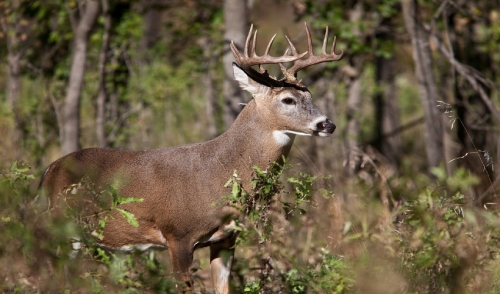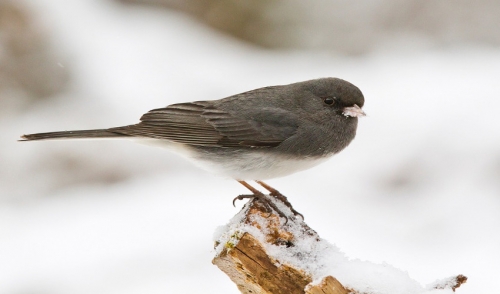Winter Birds to Watch for and How to Attract Them
You may not be able to go out birding as often as you'd like in freezing temperatures and stormy days, but when these winter birds regularly visit your...

Food plots are essential in the development of bigger and healthier animals. An average adult deer will consume approximately 6 pounds of feed per day. If you do the math over the course of a year, that’s over 2,000 pounds of feed per year per adult deer. However, the issue lies in the amount of protein available in native vegetation. Because there is only about 6-12% of protein for every 200-300 pounds of deer food from native vegetation, the body and antler sizes of deer are well below their expected potential. To achieve the desired body and antler size, deer need about 16% protein during their fawn rearing and antler growth.
Food plots help raise the percentage of protein available for deer. Some would argue that all it takes is just throwing deer corn on the earth and letting nature do the rest, but this is false. Corn only has about 8% protein; therefore by default native vegetation is a better option than just throwing corn down. Since deer only consume about 20-25% of their diet from supplemental feed like corn, it’s best to pick the right spot and build a food plot. Food plots give you the most bang for your buck and provide deer with the best diet. It has been shown that deer will consume the other 75-80% of their diet from food plot crops. Food plots give deer a more natural source of food for them to browse and eat.
Food plots are not only more cost effective, but they will also supply well above the necessary 16% of protein to reach the desired potential antler and body size. This all begins with the soil you choose to build your crops on. Yes, it’s true you want your plot to look as natural as possible, but just like your home garden, you want to give your crops the best chance to grow and survive. The use of low quality soil keeps the crops from reaching their full yield leaving the deer with little opportunity to meet their nutritional needs. Without the right dirt, the plot will not grow. The problem with finding the right dirt is that it’s tough to find. Most soil is used by agricultural farmers which forces food plotters to use the ‘leftovers.’ Be sure to pick the right spot. Open spaces that have been farmed before are more likely to have the good soil you are looking for. Just don’t pick any spot that looks good, pick an area that gives you the best opportunity for the best planting and the best view to hunt deer. Once you’ve found the right spot with good dirt and optimal hunting, collect samples of the soil for analysis. You can take these samples a few inches from below the surface, place it in a sandwich bag, and send it to the Whitetail Institute for testing. The Whitetail Institute is a great resource for testing your soil because not only will you get the results in a few days; you will also get recommendations for amending your soil and using the right fertilizers for achieving optimal growth.
Food plots are a thing a beauty not only for you but for all types of wildlife. Food plots provide outstanding nutrition for deer, and are great places to view and hunt them. Hunters everywhere are using food plots because there is no way to supply the amount of quality food for the cost without them. The main point is that when it comes to food plots, it’s all in the dirt. Without the right dirt, your plot won’t flourish, and if your plot doesn’t flourish, neither will the deer. Pick your spot and use good dirt.
We are constantly adding new specials to our site. Be sure to check back often!
We currently do not have any events scheduled.

You may not be able to go out birding as often as you'd like in freezing temperatures and stormy days, but when these winter birds regularly visit your...
Comments